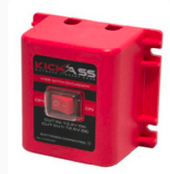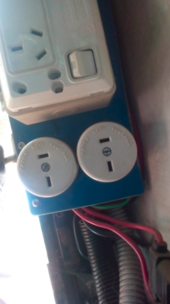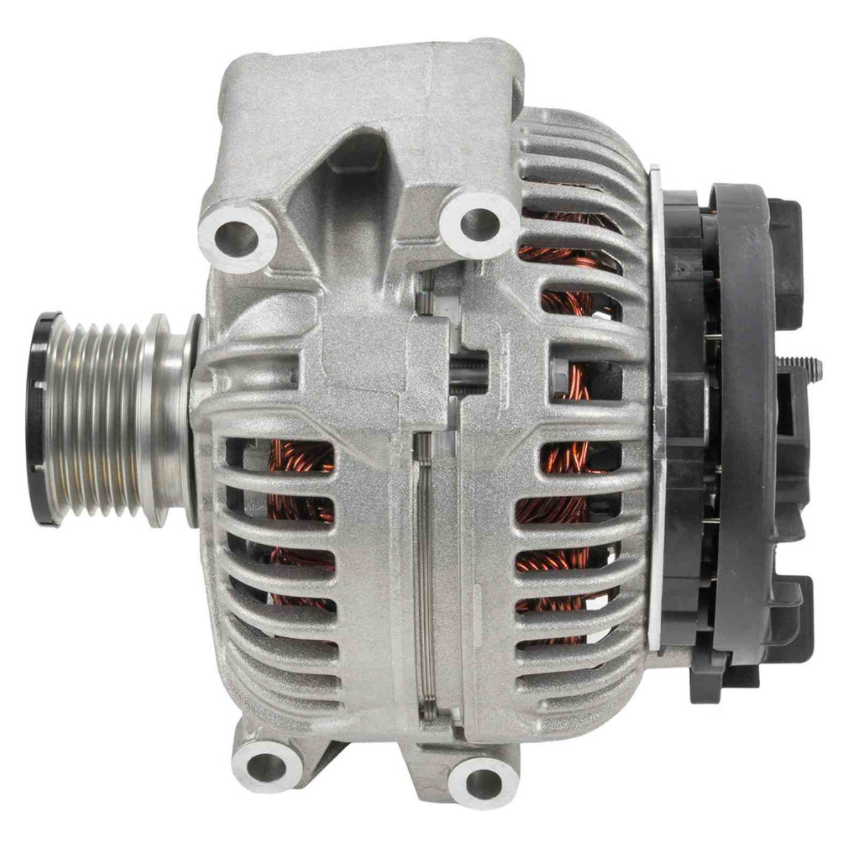Most Sprinters come with an 80A (oldest) 100A or 120A (newest) 12v alternators as stock, and the simplest solution for LiPO4 is just use a simple 'twin battery charging setup'- there's lots of arguments about not constantly charging LFP, but in practice- as long as you stay well under their maximum voltage (ie the standard 13.8-14v most car alternators run at) they can handle it just fine
This is the exact same one fitted to the ute- the switch is very handy- its wired from starter battery + to the house bank +, and if you should get a flat start battery- flick that switch on, wait a minute or two, then you can 'jump start' yourself from the house bank- works well if 'someone' forgets to turn the headlghts off during the day (right mum??? lol)

Australian campers have been doing it for well over a decade now- almost two decades!!!, as the weight advantages of LFP made themselves VERY attractive for campers- which here require a special LR or Light Rigid licence ($$$ and has added restrictions on it compared to a car licence) which if the registered maximum weight goes over 4500kg/9900lbs TOTAL weight then any driver using it must have the LR licence to drive it... (having the incorrect class of licence is the exact same legally speaking as having no licence at all- over a thousand dollars if they catch you (and they will)- and god forbid you ever have a crash- insurance is null, so you WILL be paying for the repairs to the other persons property out of YOUR pocket... even if the crash is their fault!!!, so you can see why campers and caravan manufacturers were quick to adopt LFP technology...
Some people insist you 'MUST' use a (usually quite limited current output) lithium charger, but- meh- LFP is actually quite forgiving as long as you stay out of that 'top 10% range' and a simple dual battery isolator is quite cheap and works well...
Inverter power is often a lot more than many like to claim (many say '2400w or higher needs 24v' and the like- looks at the 8kw 12v inverter sitting in the corner of the shed powering this very computer... O'Reilly???? (in best Irish accent)
Yes big inverters like mine need big cables- but they dont have to be LONG- which cuts the cost down considerably...
Mine uses two paralleled 'heavy duty truck starter motor leads per side (handy as the inverter itself actually has FOUR power terminals, 2 positive, two negative)- cost under $35 premade from SuperCheap Auto parts here lol
So yes it CAN be done all at 12v (I will admit my inverter is a 'little' over the top- but it used to live in my work ute, and was used to power tools from grinders up to welders (in an emergency lol)- and having it at the battery voltage of the factory 120A alternator with that exact same dual battery setup was a distinct advantage should the batteries run low (or I was using a welder)- just start it up and leave the engine running while using it, then leave it running twice as long as I used it for afterwards lol)

Yes thats 8000W continuous (although I do restrict it to 6k or under preferably- its getting on in years, now exactly 10 years old!!!, and been running 24/7 for the last 4 years....)- that 6 years in the utes tray obviously has left its marks on it!!!
And yes it is 12v...
The double 10A powerpoint right next to the utes rear canopy hatch (with '12v T sockets' under it for the car fridge etc) plus another one inside the cab itself between the seats...

A little extreme for a camper (unless you do all your cooking etc on electric)- but a 3-5kw is eminently doable, and a lot better than trying to graft a second alternator onto a Sprinter block (been there, done that- and it is rarely successful longterm- the bracket has to be 'way out' to give belt clearances etc, making them prone to cracking longterm...







